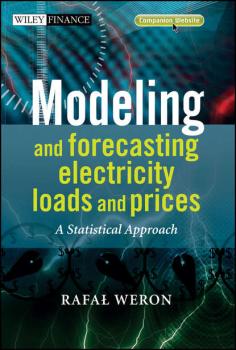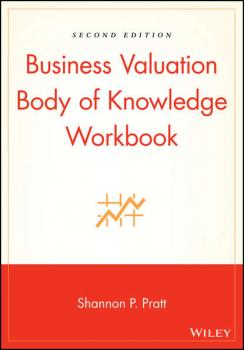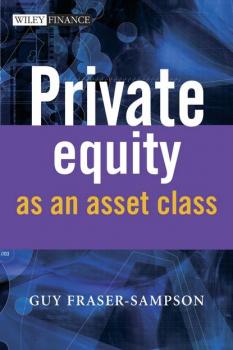ТОП просматриваемых книг сайта:
Группа авторов
Список книг автора Группа авторовАннотация
Paul Wilmott writes, "Quantitative finance is the most fascinating and rewarding real-world application of mathematics. It is fascinating because of the speed at which the subject develops, the new products and the new models which we have to understand. And it is rewarding because anyone can make a fundamental breakthrough. "Having worked in this field for many years, I have come to appreciate the importance of getting the right balance between mathematics and intuition. Too little maths and you won't be able to make much progress, too much maths and you'll be held back by technicalities. I imagine, but expect I will never know for certain, that getting the right level of maths is like having the right equipment to climb Mount Everest; too little and you won't make the first base camp, too much and you'll collapse in a heap before the top. "Whenever I write about or teach this subject I also aim to get the right mix of theory and practice. Finance is not a hard science like physics, so you have to accept the limitations of the models. But nor is it a very soft science, so without those models you would be at a disadvantage compared with those better equipped. I believe this adds to the fascination of the subject. «This FAQs book looks at some of the most important aspects of financial engineering, and considers them from both theoretical and practical points of view. I hope that you will see that finance is just as much fun in practice as in theory, and if you are reading this book to help you with your job interviews, good luck! Let me know how you get on!»
Аннотация
This book offers an in-depth and up-to-date review of different statistical tools that can be used to analyze and forecast the dynamics of two crucial for every energy company processes—electricity prices and loads. It provides coverage of seasonal decomposition, mean reversion, heavy-tailed distributions, exponential smoothing, spike preprocessing, autoregressive time series including models with exogenous variables and heteroskedastic (GARCH) components, regime-switching models, interval forecasts, jump-diffusion models, derivatives pricing and the market price of risk. Modeling and Forecasting Electricity Loads and Prices is packaged with a CD containing both the data and detailed examples of implementation of different techniques in Matlab, with additional examples in SAS. A reader can retrace all the intermediate steps of a practical implementation of a model and test his understanding of the method and correctness of the computer code using the same input data. The book will be of particular interest to the quants employed by the utilities, independent power generators and marketers, energy trading desks of the hedge funds and financial institutions, and the executives attending courses designed to help them to brush up on their technical skills. The text will be also of use to graduate students in electrical engineering, econometrics and finance wanting to get a grip on advanced statistical tools applied in this hot area. In fact, there are sixteen Case Studies in the book making it a self-contained tutorial to electricity load and price modeling and forecasting.
Аннотация
This book introduces the reader to the C++ programming language and how to use it to write applications in quantitative finance (QF) and related areas. No previous knowledge of C or C++ is required – experience with VBA, Matlab or other programming language is sufficient. The book adopts an incremental approach; starting from basic principles then moving on to advanced complex techniques and then to real-life applications in financial engineering. There are five major parts in the book: C++ fundamentals and object-oriented thinking in QF Advanced object-oriented features such as inheritance and polymorphism Template programming and the Standard Template Library (STL) An introduction to GOF design patterns and their applications in QF Applications The kinds of applications include binomial and trinomial methods, Monte Carlo simulation, advanced trees, partial differential equations and finite difference methods. This book includes a companion website with all source code and many useful C++ classes that you can use in your own applications. Examples, test cases and applications are directly relevant to QF. This book is the perfect companion to Daniel J. Duffy’s book Financial Instrument Pricing using C++ (Wiley 2004, 0470855096 / 9780470021620)
Аннотация
Wealth management is one of the areas in which banks and other personal financial services players are investing heavily. But the market is changing fast. Going forward, players therefore need to adapt their strategies to the new realities: what worked in the past will not, for the most part, be appropriate in the future. This unique book, written by a former McKinsey consultant, offers an up-to-date, detailed, practical understanding of this exciting area of financial services.
Аннотация
This book demystifies the foreign exchange market by focusing on the people who comprise it. Drawing on the expertise of the very professionals whose decisions help shape the market, Thomas Oberlechner describes the highly interdependent relationship between financial decision makers and news providers, showing that the assumption that the foreign exchange market is purely economic and rational has to be replaced by a more complex market psychology.
Аннотация
This volume is the eleventh in an annual series in which: Top economists provide a concise and accessible evaluation of major developments in trade and trade policy. Examines key issues pertinent to the multinational trading system, as well as regional trade arrangements and policy developments at the national level. Provides up-to-date assessments of the World Trade Organization's current Trade Policy Reviews.
Аннотация
Game theory is the theory of social situations, and the majority of research into the topic focuses on how groups of people interact by developing formulas and algorithms to identify optimal strategies and to predict the outcome of interactions. Only fifty years old, it has already revolutionized economics and finance, and is spreading rapidly to a wide variety of fields. LQ Dynamic Optimization and Differential Games is an assessment of the state of the art in its field and the first modern book on linear-quadratic game theory, one of the most commonly used tools for modelling and analysing strategic decision making problems in economics and management. Linear quadratic dynamic models have a long tradition in economics, operations research and control engineering; and the author begins by describing the one-decision maker LQ dynamic optimization problem before introducing LQ differential games. Covers cooperative and non-cooperative scenarios, and treats the standard information structures (open-loop and feedback). Includes real-life economic examples to illustrate theoretical concepts and results. Presents problem formulations and sound mathematical problem analysis. Includes exercises and solutions, enabling use for self-study or as a course text. Supported by a website featuring solutions to exercises, further examples and computer code for numerical examples. LQ Dynamic Optimization and Differential Games offers a comprehensive introduction to the theory and practice of this extensively used class of economic models, and will appeal to applied mathematicians and econometricians as well as researchers and senior undergraduate/graduate students in economics, mathematics, engineering and management science.
Аннотация
Sample exam questions and updated information on the latest developments in the field for valuation candidates and professionals Includes questions and exercises that typically appear on accreditation exams Covers the most frequently encountered errors on reports and in examinations Reflects the latest business valuation developments, viewpoints, court case references, and data resources Contains hundreds of multiple-choice and true/false questions, short problems, and fill-in-the-blank questions Includes eight hours of CPE credit through a self-study examination A companion to Shannon Pratt’s Business Valuation Body of Knowledge, Second Edition or a stand-alone resource, the Business Valuation Body of Knowledge Workbook, Second Edition keeps ABV, ASA, CBA, and CVA candidates and current practitioners up to speed on the latest developments in this constantly changing discipline. Order your copy today!
Аннотация
Guy Fraser-Sampson draws upon twenty years' private equity experience to provide a practical guide to mastering the intricacies of this highly specialist asset class. Aimed equally at investors, professionals and business school students, it starts with such fundamental questions as «what is private equity?» and progresses to detailed analysis of venture and buyout returns. It also unveils a totally new concept which looks set to revolutionise thinking in the industry: Total Return investing. Often unfairly reviled, and frequently misunderstood, private equity differs from all other asset classes in various important respects, not least in the nature and timing of its returns, which require a whole new approach for those reared on more traditional investments such as bonds and shares. This book shows how a good grasp of the basic structure of private equity vehicles and returns (including the dreaded J-curve) can lead to full understanding of the techniques needed to measure and analyse performance. Key points include: A glossary of private equity terms Venture funds and transactions Buyout funds and transactions Understanding private equity returns Analysis of historic returns How to plan a fund investment programme How to conduct effective due diligence Total Return investing
Аннотация
This book is about championing a move away from simply evaluating physical assets to understanding and evaluating the intangible value of an entity. It means moving beyond economic theory to reprioritise and change the organisation so that further value can be created via processes, systems, measures, skills, knowledge and strategy. It is also about mapping the intangible value chain. The book looks at value networks and, using real-life projects asks questions such as: What do company value networks look like How are they used to create value How can one ‘value’ the value chain What lessons can be learnt from companies with high value networks as opposed to companies with low value networks What is the impact on finance disciplines, processes, measures, systems and skills. These answers to these questions as provided by the case studies and interviews with CFOs from the companies involved will help to improve focus, improve shareholder value, improve transparency – both internally and externally – cut waste in the current decision support structure and prevent inadequate decision making and lost opportunity.










